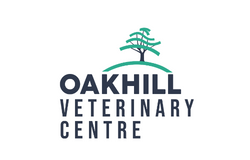Embryo transfer- repeat breeder embryos (‘cow stoppers’)
What is a Problem Breeder Cow?
Cows that have had three or more services at regular (21-24 day) intervals and that are still not in calf.
What treatments can we use to treat problem breeders?
Problem Breeder Embryos – implanting a beef cross embryo 7 days after service in problem repeat breeder cows improved pregnancy rates by over 20% according to a recent UK study.
How does implanting an embryo help?
By implanting a second embryo into the cows’ uterus the strength of the hormonal signals within the cow are doubled and so the likelihood of the cow reabsorbing the embryo(s) is reduced.
What cows would make good Embryo Transfer candidates?
- Cows should be cycling normally, showing regular heats every 21 – 24 days.
- Cows should be vet-checked to make sure there is no uterine damage and no ovarian problems such as cystic ovaries.
- Cows should be clean with no uterine discharge.
- Ideally cows should be in reasonable body condition and good health. Chronically lame or high SCC cows are not ideal candidates!
What is the procedure?
- Cow AI’d as normal. Arrange vet visit for 7 days later.
- Cow examined prior to implanting the embryo.
- We administer an epidural as this facilitates the procedure and should improve success rates.
- Embryo implanted and cow scanned 5 weeks later to check if successful.
Maximising success rates in embryo transfer
These are some suggestions when dealing with embryo recipients.
- Maiden heifers make the best recipients: they have higher conception rates.
- Cows can be used providing they have a good body condition score, and they are clean and cycling.
- Embryos can be put in to heifers that were bulling 6, 7 or 8 days previously. The highest conception rates are likely to be achieved 7 days after a heat.
- A good reference heat is vital to the success of the transfer.
- Reference heats can be a natural observed heat or synchronised induced heats.
- Included heats (i.e. Following a CIDR and prostaglandin programme) work equally well providing good heat detection is undertaken.
- A wrong or inaccurate heat observation will mean no pregnancy as these recipients are not synchronised with the donor cow.
- Avoid feeding changes to the recipient group for four to six weeks either side of transfers. Try to keep the diet consistent.
- Knowing the trace element history of your farm is important.
- Grass variation and grass silage variation can affect conception rates.
